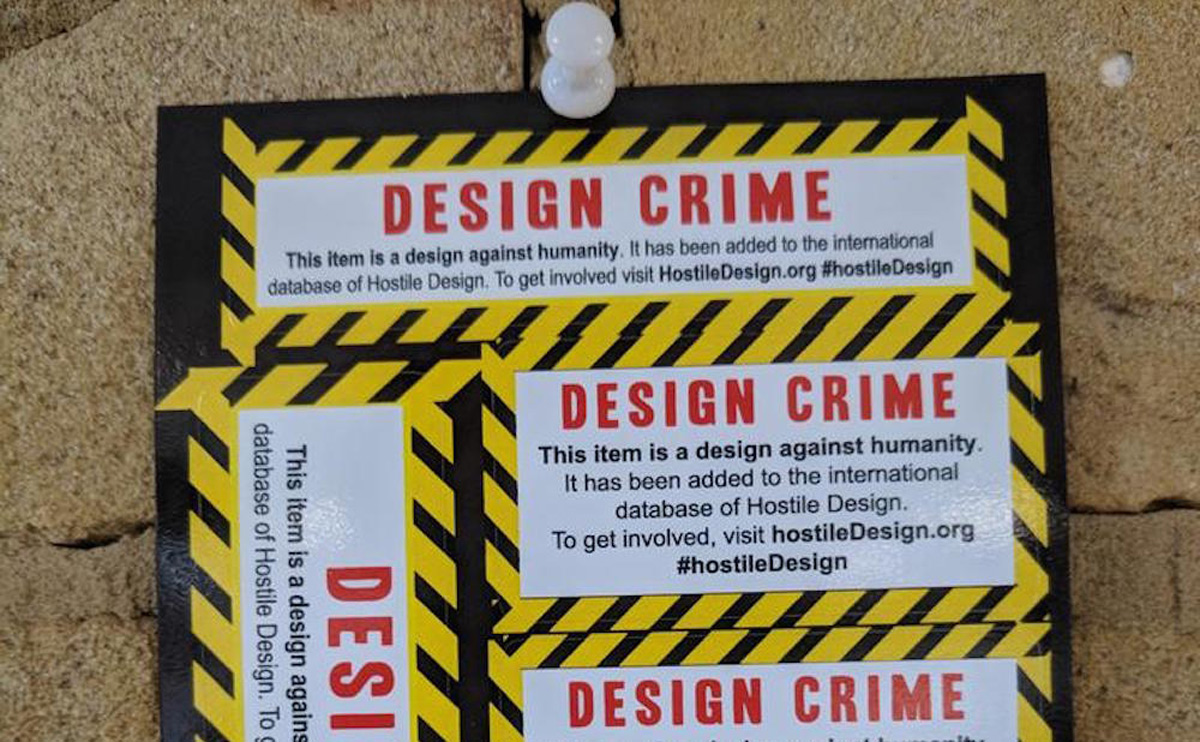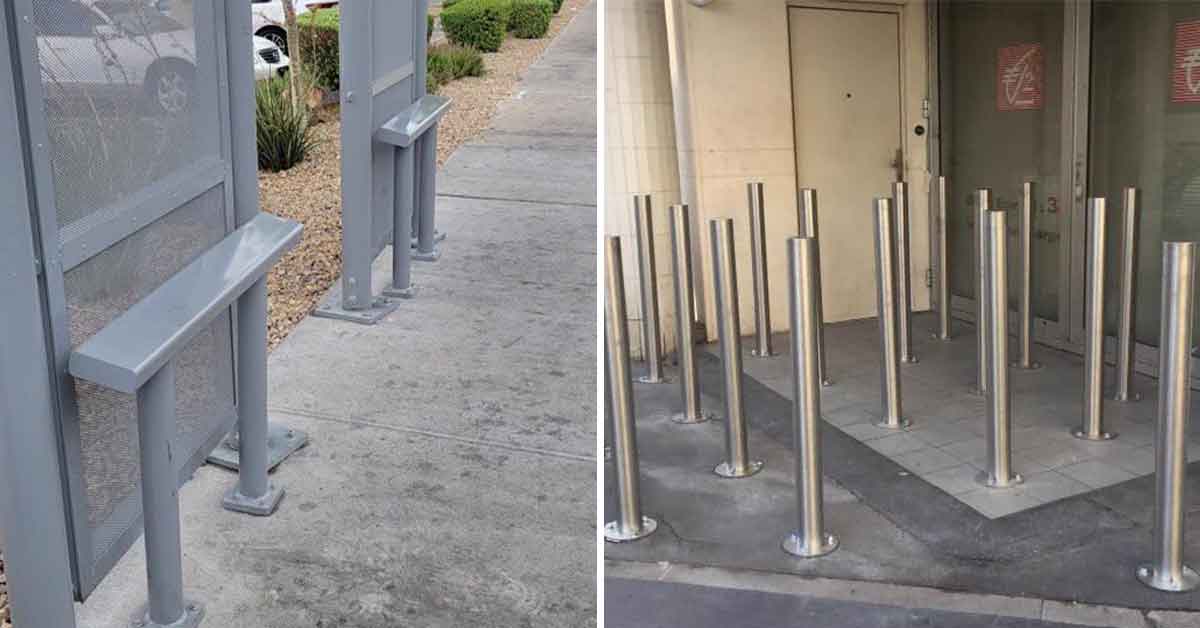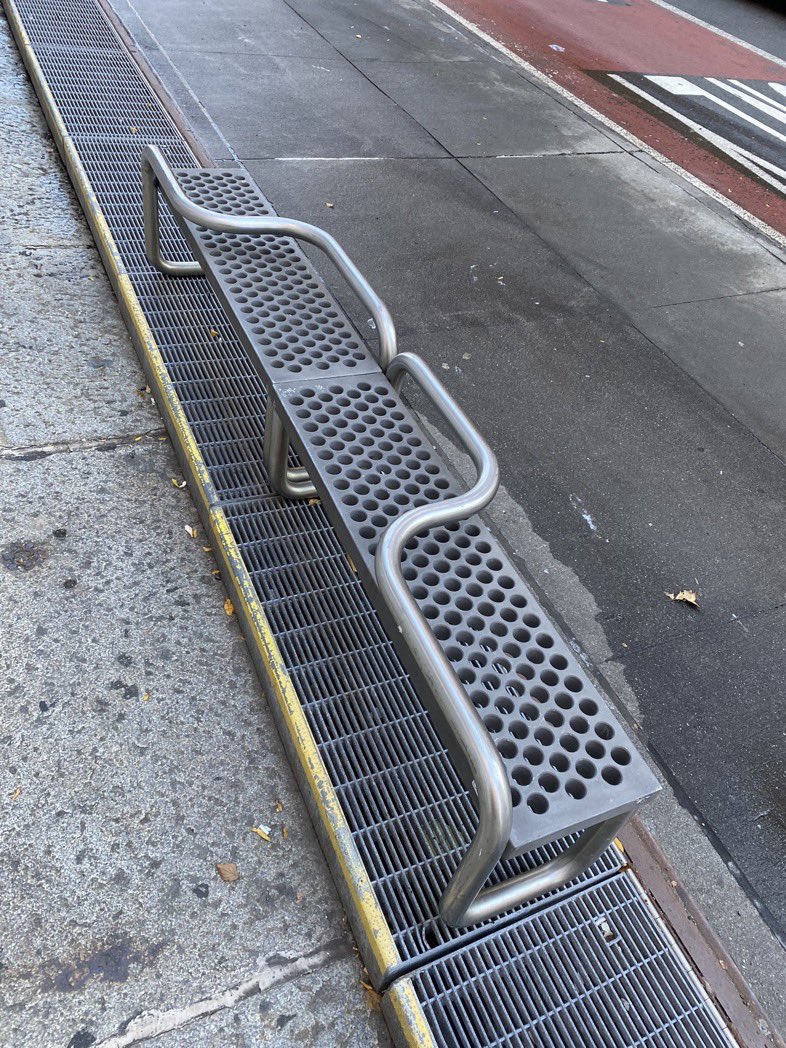Table Of Content
- Identifying hostile architecture
- Tenants and Home Buyers: Do You Know Your Fair Housing Rights?
- Latest articles
- No transcript, no appeal: California courts face ‘crisis’ over lack of records
- How Homes in Bali Are Designed for Harmony—and to Keep Demons at Bay
- One reply on “Artist Launches Campaign to Call Out Hostile Urban Design”
- College of Liberal Arts Resources
- ‘Cam Era’ — the contemporary urban Panopticon.

I have seen police officers drive up in their cruisers and tell people they cannot have their legs on the sidewalk, when they were sitting on the church steps. Threats of tickets and even arrest have been made, but restaurants claim several feet of the sidewalk making it very difficult to navigate your way down the street with a family or in a wheelchair, in order to serve alcohol on the sidewalk. Although hostile design may seem like a new phenomenon, it’s actually been used by civil engineers to influence social behaviour long before the modern age. In 20th century New York City, for instance, Robert Moses designed roads in Long Island to have low stonework bridges, so buses could not pass beneath them, which prevented people who relied on public transport from visiting the area. In London in the 1800s, shelves were also installed outside inns and bars to curb public urination.
Identifying hostile architecture
While this practice may reduce the amount of bird excrement on cars, it renders the tree uninhabitable. To deter intravenous drug use, public washrooms in Victoria have installed blue lights, which obscure superficial veins. As revealed by many studies, however, drug users will still try to inject themselves in blue-lit bathrooms, thereby increasing the risks of infection and soft tissue damage. More broadly, blue light also compromises safety for all washroom users by reducing visibility and making it harder to clean up bodily fluids.

Tenants and Home Buyers: Do You Know Your Fair Housing Rights?
If dark patterns are deliberately guiding / restricting people into certain behavior, in what capacity can they use those patterns strategically against the builders of that environment? For example, recently a large group of TikTok and Twitter users decided to request tickets to a Trump rally in Tulsa with no intention of going. A similar trend has been going around where these users intentionally become the target of Trump campaign advertising so the president’s money is wasted on people who would never vote for him. These are examples of people rallying together and using the algorithms to their advantage.

Latest articles
The bench was unveiled to the public in 2012 and has faced harsh backlash since. Prominent among public criticism is the fact that it addresses the symptoms of social issues (e.g., homelessness, drug abuse, littering) rather than their origins. David Chiu said he hopes the high court “strikes the right balance” in allowing cities to enact reasonable restrictions without giving them a free pass to throw homeless people behind bars. He said San Francisco has already invested billions in shelter beds and other resources for homeless people, and the Supreme Court’s decision — whatever it is — won’t change its commitments. Design Council cities programme advisor Catherine Horwill says ultimately public spaces need to work for everybody. In this sense, she feels, any kind of exclusivity is failing at the first hurdle.
“It’s extremely difficult to do with any fairness and accuracy,” a former University of California official told the Wall Street Journal. Bears for Palestine said that they will not move “until the university divests,” and are demanding that the university “end the silence” by releasing a public statement calling for an immediate “end to the Gaza Genocide” and calling on U.S. officials to follow suit. Los Angeles Police Department officers arrested 93 people on trespassing charges at USC this week, too, clearing the solidarity encampment. On Thursday, several UCLA students pitched their tents in front of Royce Hall. At UC Berkeley, students and faculty joined the UC Berkeley Divestment Coalition on Monday to establish a Free Palestine encampment on the steps where the 1960s free speech movement originated. Journalist and architecture curator Adam Štěch dishes on some of the city’s must-see buildings from the postwar era.
15 examples of 'anti-homeless' hostile architecture common to cities - Interesting Engineering
15 examples of 'anti-homeless' hostile architecture common to cities.
Posted: Sun, 22 Nov 2020 08:00:00 GMT [source]
Last year, on a trip to Santa Cruz, I was hoping to find something called a “mosquito box.” You might be fooled into thinking that a mosquito box would be used to fight mosquitos – a well-known pest. If you’ve been in gentrifying areas, such as Walnut Hills or Over-the-Rhine, you might be surprised to hear classical music being blasted on the outside of buildings. I guess the thinking is that people don’t want to hear classical music, so they will move somewhere else.
One reply on “Artist Launches Campaign to Call Out Hostile Urban Design”
Its function takes away its form as well as its potential usability for average people, and it’s often been called unsympathetic by its detractors, specifically to the homeless population. For many, hostile design is seen as a way of further marginalizing or pushing away certain demographics, whether they are young teens or homeless individuals. For these reasons, hostile design remains a controversial and hotly debated topic within architecture. The metal seats ignited a firestorm of criticism on the social media site NextDoor, with contributors criticizing the city for being heartless and inhumane to vulnerable homeless people who have nowhere else to sleep. Others complained that the effort to keep homeless people away unfairly adds inconveniences for everybody else. This type of hostile design is increasingly showing up on Oahu at bus stops, in Chinatown doorways and in city parks where homeless people tend to congregate.
Wellness, healthy cuisine, and a prime West London locale make this the perfect spot for both gurus and social go-getters. The heart of West Hollywood beats quicker in an historic bungalow that’s been transformed into the ultimate city sanctuary. But from the arguments, it’s not clear the court will say Grants Pass went too far and violated the “vagrants’” constitutional rights. “It seems both cruel and unusual to punish people for acts that constitute basic human needs,” said Justice Ketanji Brown Jackson. It’s not as if human beings can control the need to sleep, just as they cannot control the need to breathe or to eat. “We hope that there is support for the notion that cities need to have more flexibility to address the crisis on the streets, but providing us with flexibility is different from letting cities completely off the hook in addressing what is happening,” Chiu said.
BART's Fare Evasion Crackdown Exposes the 'Deadly Elegance' of Hostile Design - KQED
BART's Fare Evasion Crackdown Exposes the 'Deadly Elegance' of Hostile Design.
Posted: Tue, 23 Jul 2019 07:00:00 GMT [source]
The New York Police Department arrested more than 100 people last week at an encampment formed by student activists on Columbia University’s main lawn in protest against the Israel-Hamas war. Since then, dozens of pro-Palestinian encampments and protests have sprouted up on campuses nationwide. But it did agree to take up the Grants Pass case after the 9th Circuit ruled in 2022 that citing and arresting homeless people who have nowhere else to go is a violation of the 8th Amendment’s prohibition against cruel and unusual punishment. If a city cannot offer shelter, the court said again, it should not be able to enforce criminal restrictions on public camping.
I believe parks were created and designed for a respite from the hustle and bustle of city life. Now, instead of placing the bar in the middle of the bench, they make the benches too short to lay on, such as the bus shelters, including Government Square. These are examples of a form of city planning that the general public has coined as hostile architecture. In France, various materials and shapes are used to restrict the free use of public spaces.
It is a space which is there to serve its community, and this can include both positive and negative actions. Former UC Santa Cruz Chancellor George Blumenthal said that decisions over how to respond to campus protests aren’t easy. At least a few times a year, he said, he tussled with the tricky issue of what to do when student protests blocked the only two entries to campus. He generally allowed them to shut down the campus for a day, despite backlash from some “furious” faculty who wanted him to more quickly restore access.
The website says its goal is to raise awareness about hostile design, get people to openly decry it and encourage urban planners to create more rather than less welcoming public space for everyone. In Honolulu’s Chinatown, exclusionary design is evident in the fenced off doorways designed to deter homeless people from using the private doorsteps as urinals or sleeping areas. Demographers estimate that between 1959 and 2042 the world population will have grown from 3 billion to an estimated 9 billion. We can also assume that a majority of the population will be living in cities. According to the World Bank, since 2007, more than 50% of the world’s population lives in cities.

No comments:
Post a Comment